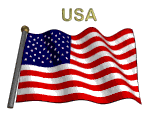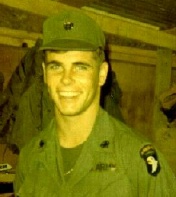
The 60s Official Site
"Where Music is Our Middle Name"
Quick Links
Your Daily Oldies Fix Top Ten Countdown Solid Gold Memories Jukebox Music
Vibration of a Nation Remember When Television of the 50s and 60s 60s Slang
Things You Just Don't Hear Anymore 60s TV Commercials Chickenman Episodes Woodstock This Weeks Number One Hits
The Early Years of Rock and Roll Vietnam War Myths
All the content menu is listed on the left menu border bar
Lost in SpaceLost in Space was a science fiction televsion series produced by Irwin Allen for broadcast on CBS. The show ran for three seasons, with 83 episodes airing between September 15, 1965, and March 6, 1968 (the unaired pilot "No Place To Hide" and the 1998 reunion "Lost In Space Forever" bring the total number of episodes to 85). Their first TV season was filmed in black and white, but the rest were filmed in color. The show aired at Wednesday Nights from 7:30 to 8:30 PM slot. In 1998, a Lost in Space movie, based on the TV series, was released.Though the TV series concept centered on the Robinson family, many storylines focused primarily on Dr. Zachary Smith (Jonathan Harris), originally an utterly evil would-be killer who became a sympathetic anti-hero by the end of the first season, providing comic relief to the TV show plus causing most of the episodic conflict. The first appearance of a space-faring Robinson family (unrelated to the series' Robinsons) was in a comic book published by Gold Key Comics, The Space Family Robinson, December 1962. The TV series is an adaptation of the novel The Swiss Family Robinson. The astronaut family of Dr. John Robinson, accompanied by an Air Force pilot and a robot, set out from an overpopulated Earth in the spaceship Jupiter 2 to visit a planet circling the star Alpha Centauri with hopes of colonizing it. Their mission in 1997 (the official launch date of the Jupiter 2 was October 16, 1997) is immediately sabotaged by Dr. Zachary Smith, who slips aboard their spaceship and reprograms the robot to destroy the ship and crew. Smith is trapped aboard, saving himself by prematurely reviving the crew from suspended animation. They save the ship, but consequent damage leaves them lost in space. Eventually they crash on an alien world, later identified as Priplanis, where they must survive a host of adventures. Smith (whom Allen originally intended to kill off) remains through the series as a source of comedic cowardice and villainy, exploiting the forgiving (or forgetful) nature of the Robinsons. At the start of the second season, the repaired Jupiter 2 launches
again, but after two episodes the Robinsons crash on another planet and spend the season there. This replicated
the feel of the first season, although by this time the focus of the series was more on humor than straight
action/adventure. Following the format of Allen's first TV series, Voyage to the Bottom of the Sea, fantasy-oriented adventure stories were emphasized. The show delivered a visual assault of special effects, explosions, monstrous aliens, spaceships, and exotic sets and costumes drenched in the bright, primary colors that were typical of early color television. |
|




